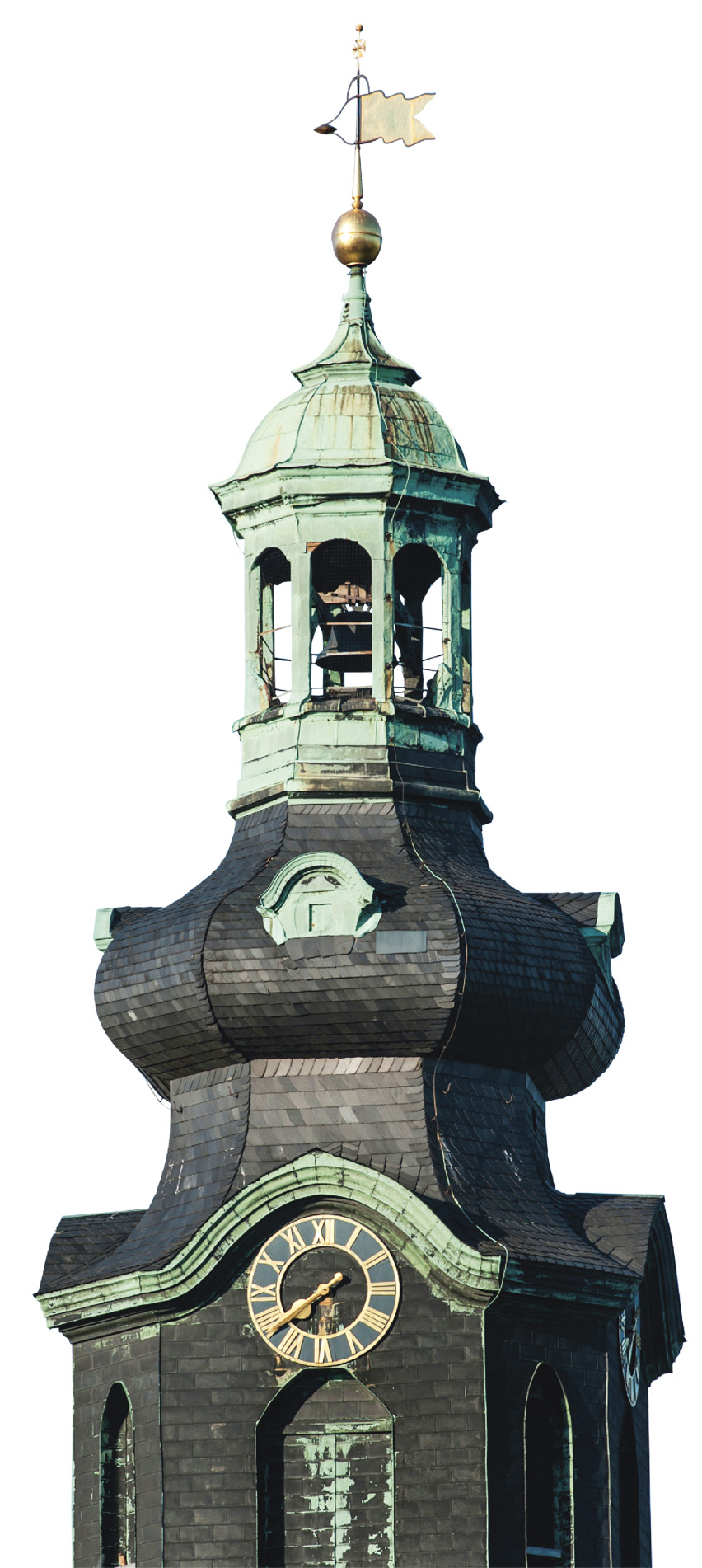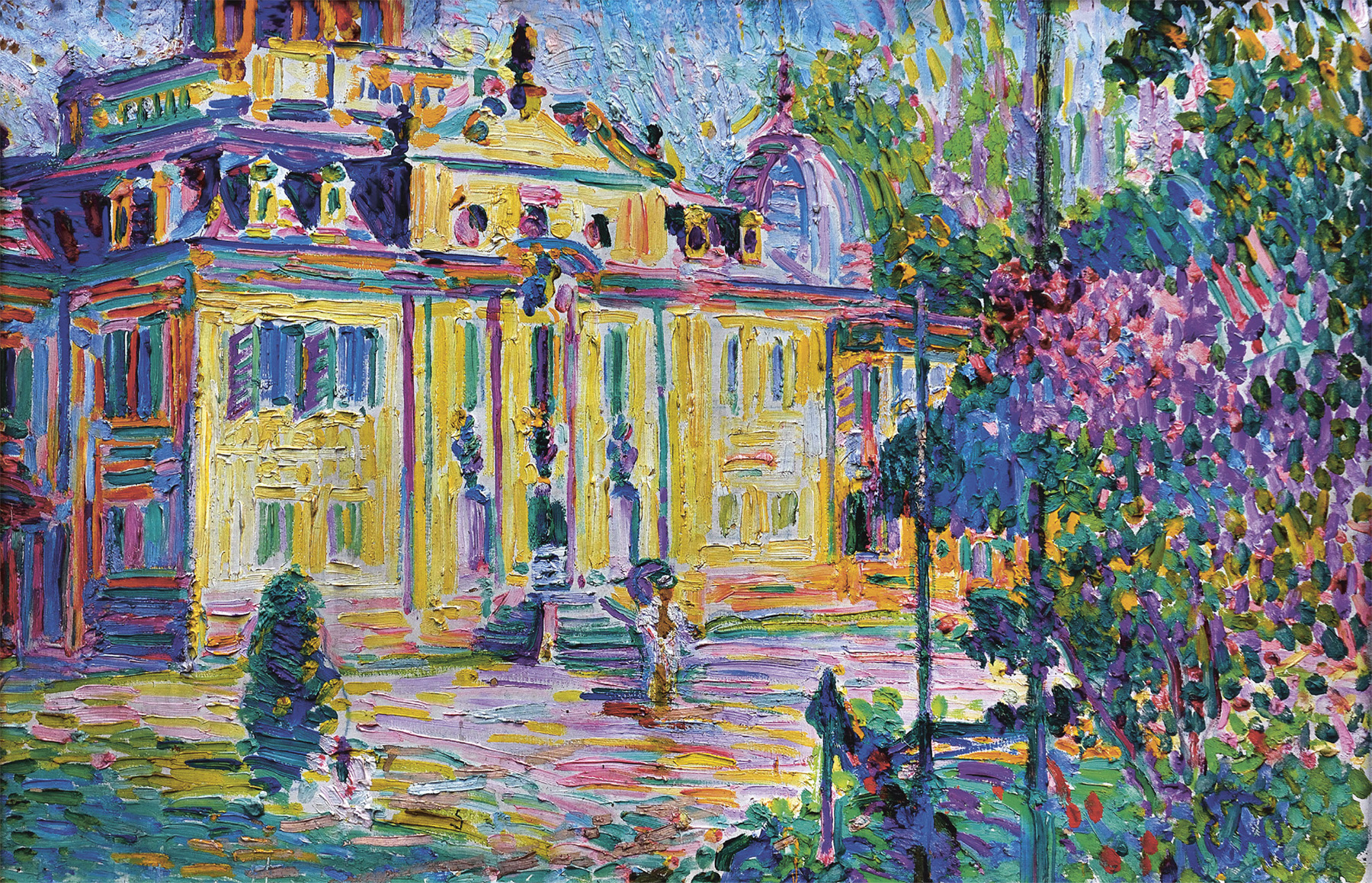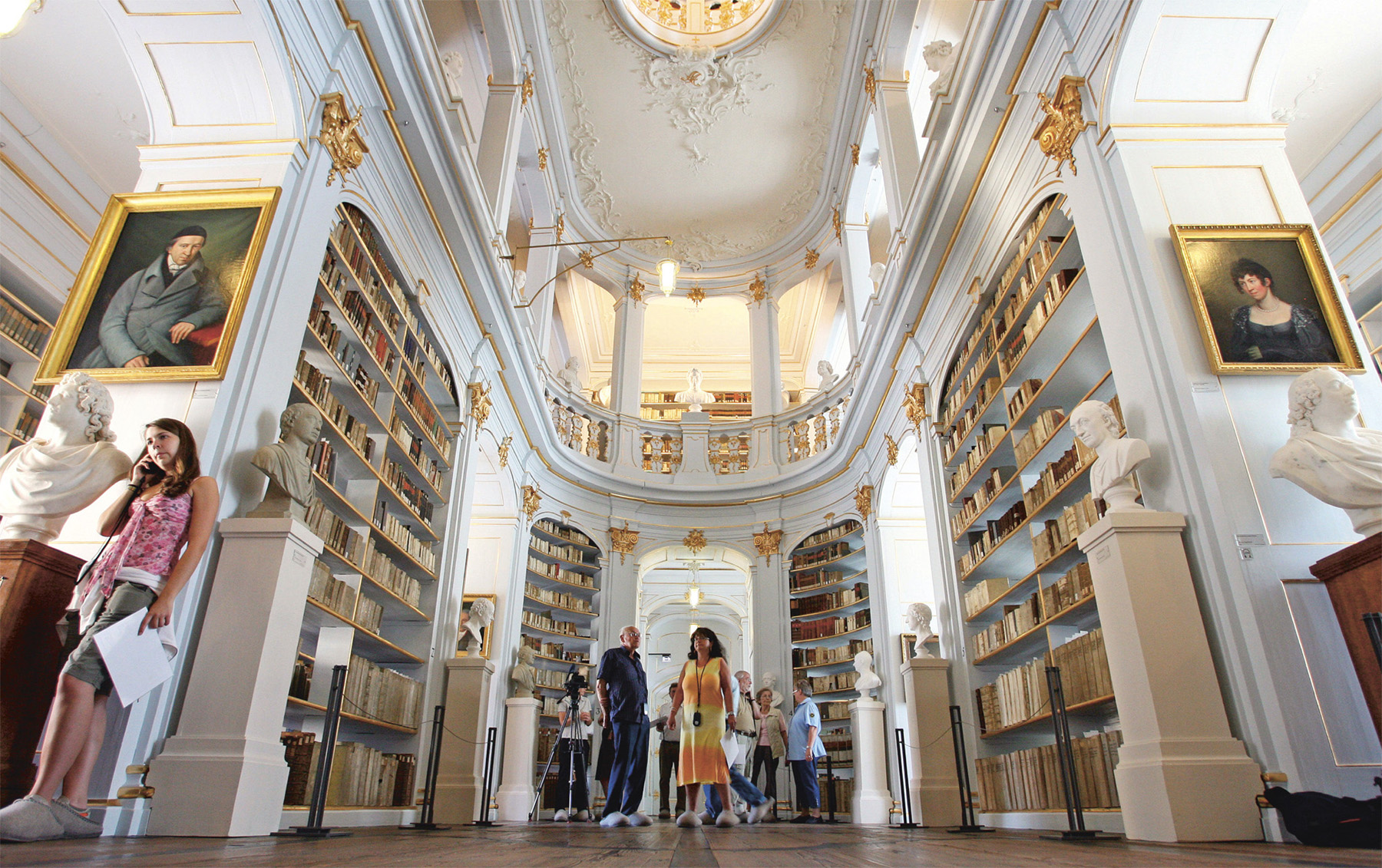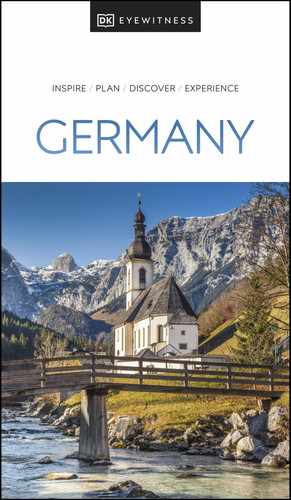Weimar was a significant centre for German culture during a period which became known as the Golden Age, from 1758 to 1832. It continued to play a part in the lives of many influential artists and thinkers, and it was where the Bauhaus School was founded in 1919. The city also gave its name to the Weimar Republic, the democratic German State which lasted from World War I to 1933.

t The Rathaus on Marktplatz, the main square in Weimar’s old town
Experience Thuringia

n Double-tap image to read the labels
The New Museum is an important sight in the Weimar Modernism Quarter, which was developed to celebrate the 100th anniversary of the Bauhaus movement in 2019. The museum also hosts a series of themed interactive handicraft workshops.
The City Museum is devoted to the history of Weimar, but it also hosts temporary exhibitions and a natural history section. It is housed in a Neo-Classical house, which was built in the late 18th century for the publisher Justin Bertuch, one of the most influential businessmen of Weimar’s Golden Age.
This Renaissance house, which was extended in the late 18th century, illustrates how people lived in Goethe’s time.
This church has belonged to a Lutheran parish since the time of the Protestant Reformation. The late-Gothic hall building has Baroque furnishings and an original altar painted by the Cranachs. It is also known as the Herderkirche, after the poet who preached here.
The church forms part of the UNESCO site named “Classical Weimar”, a selection of buildings that relate to Weimar’s Golden Age.
Did You Know?
Duchess Anna Amalia was a gifted composer as well as the regent of several German states.

Hidden Gem
Artists’ Church
Jakobskirchhof is the oldest extant burial ground in the city, dating back to the 12th century. Its mausoleum holds the remains of several artists including Cranach the Elder and Friedrich Schiller.
This Baroque palace was the home of Dowager Duchess Anna Amalia (1739-1807). Acting as regent for her son Karl August from 1758–85, she was one of the few female leaders in Germany during the long history of the Holy Roman Empire.
Anna Amalia acquired the Wittumspalais at the end of her regency and had the interior redesigned, adding beautiful frescoes designed by the director of the Leipzig Academy of Drawing.
This vast ducal castle was rebuilt in the Neo-Classical style for Duke Karl August (1757–1858), the son of Anna Amalia. He inherited several German states and later became the Grand Duke of Saxe-Weimar-Eisenach, reigning until his death.
His castle has original interiors and fine paintings from the Weimar Art School

t The bell tower of the Stadtschloss
This museum is in the house where Friedrich Schiller lived when he wrote Wilhelm Tell (1804), and the period interiors provide a glimpse into the writer’s life.
Experience Thuringia
|
eat Erbenhof This elegant restaurant serves regional cuisine based on Thuringian recipes, made with local ingredients. ⌂ Brauhausgasse 10–14 ∑ erbenhof.de ¡¡¡ Lava Soul Kitchen The décor and menu here are casual but the quality of food is high. ⌂ Karl-Liebknecht-Strasse 10 ∑ lava-weimar.de ¡¡¡ Shiva This classic Indian restaurant offers great traditional dishes like lamb rogan josh and dal. ⌂ Carl-August-Allee 17A ∑ shiva-restaurant-weimar.jimdo.com ¡¡¡ |
Hungarian composer and musician Franz Liszt lived here from 1869 to 1886, while he composed the Hungarian Rhapsody. His apartment has been preserved to this day, and visitors can enjoy his music in an exhibition on the ground floor.
This museum is devoted to the art school founded here in 1919 by Walter Gropius.
Bauhaus aimed to blend different forms of art and was one of the most influential artistic movements of the 20th century.

t A painting of Schloss Belvedere by Curt Herrmann (1912)
This ducal summer residence, which was built between 1724 and 1732 in Belvedere Park, has a fine collection of decorative art from the Rococo period and a wonderful park.
Goethe’s first home in Weimar, this small villa is in the pleasant park – which Goethe helped design – alongside the River Ilm.

t The Rococo Hall at the Herzogin-Anna-Amalia-Bibliothek
This former Mannerist palace, also known as Grünes Schloss (Green Palace), became the library of Duchess Anna Amalia in 1761. Its oval Rococo interior, one of the finest of its type in Europe, now contains a public research library for literary and cultural history, specialising in German literature from 1800.
This house was presented to Goethe by Duke Karl August. Here the writer wrote his most famous work, Faust (1808). The museum shows items associated with Goethe, including some of his private art and natural scientific collections, as well as his personal library.
The present Neo-Classical building, completed in 1907 is the third theatre to stand on this site. Well-known conductors who worked here include Franz Liszt and Richard Strauss, and it was also the venue for the world premiere of Wagner’s Lohengrin. In 1919 the National Congress sat in the Nationaltheater and passed the new constitution for the Weimar Republic. The Deutsches Nationaltheater is home to the Staatskapelle Weimar, one of the world’s oldest orchestras, and is closely associated with Goethe and Schiller, whose statues – by sculptor Ernst Rietschel – stand outside.

t Goethe and Schiller statue at the Deutsches Nationaltheater
Buchenwald, 8 km (5 miles) north of Weimar, was the site of a concentration camp set up by the Nazis. During the period 1937 to 1945, over 54,000 people were killed here. It is now a museum and a documentation centre.
